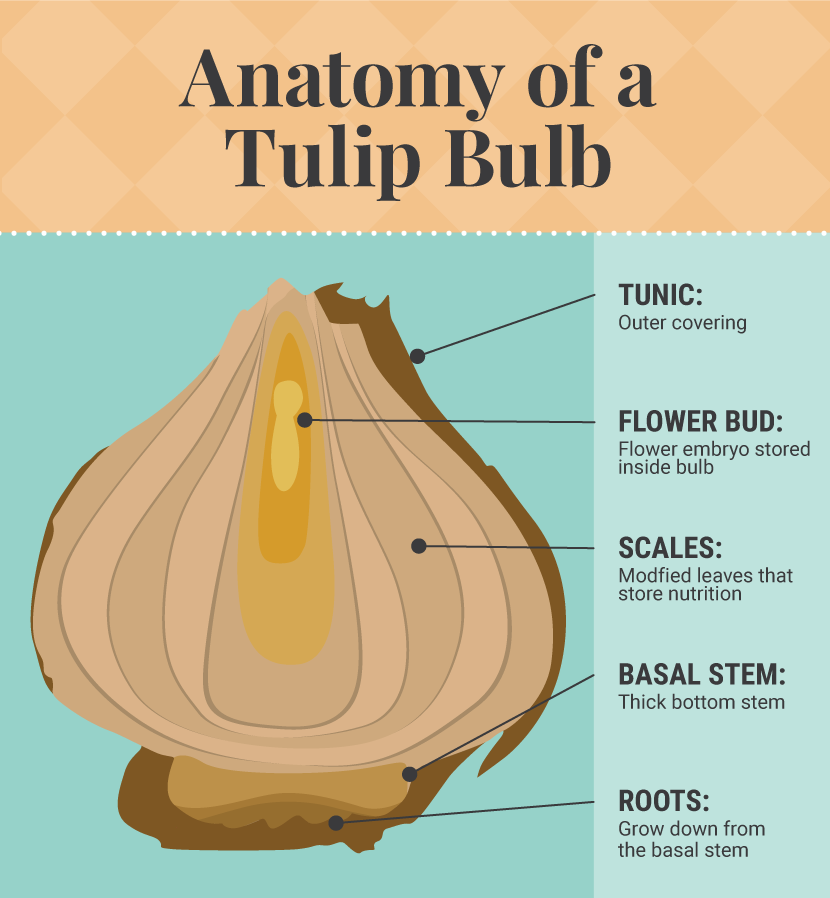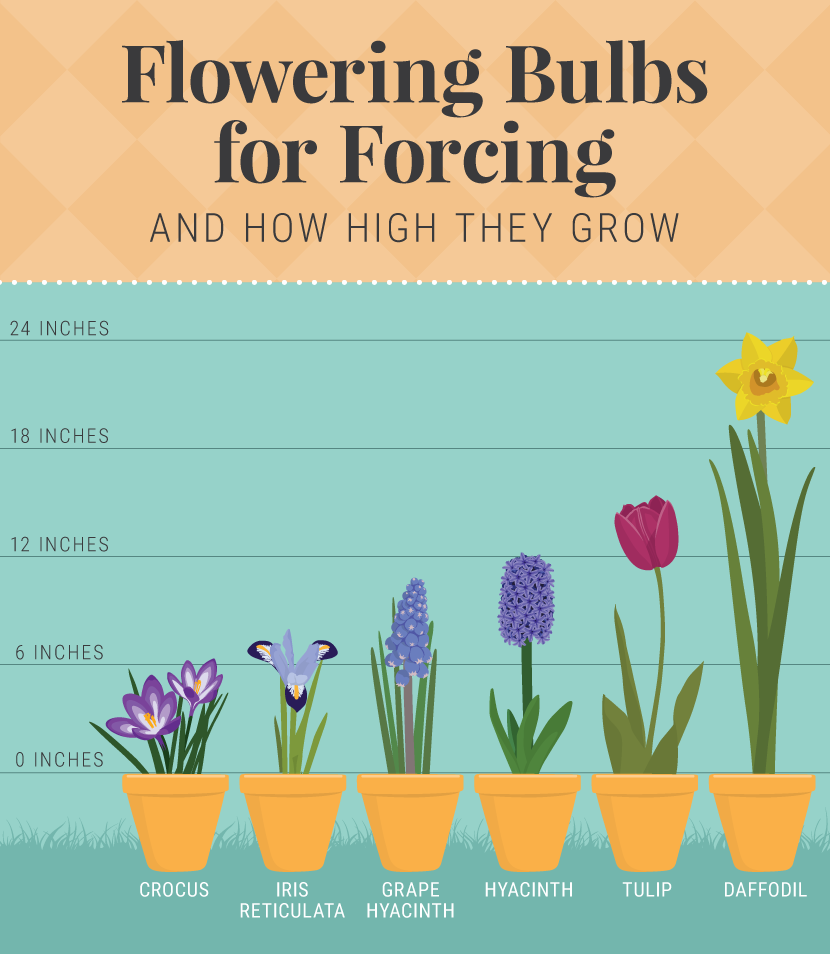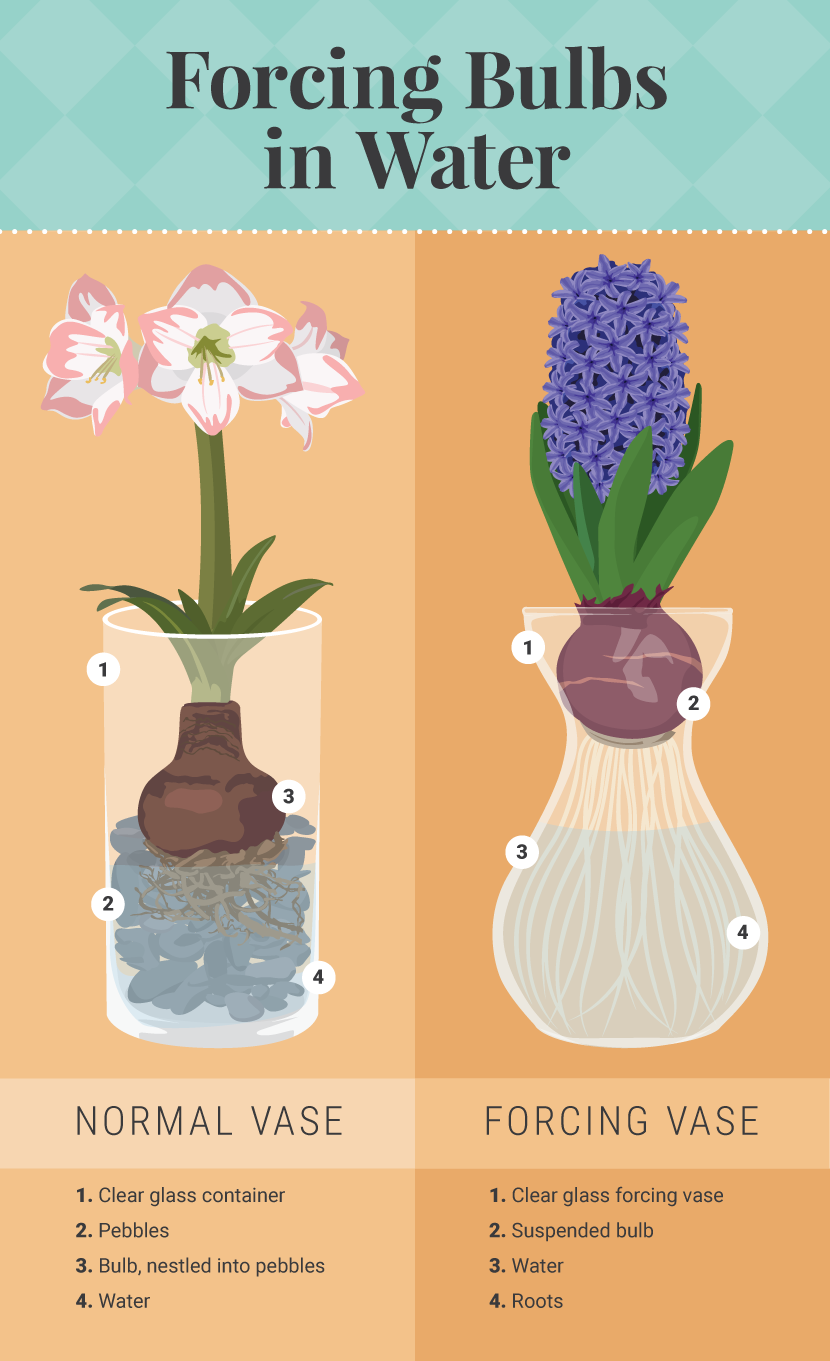Forcing Bulbs:
Recreate Nature In Your Home
The often dull, dreary months of winter can be a down time for many gardeners – sunshine is limited and outdoor gardening is typically at a standstill,
making us yearn for the days of colorful flowers and cheerful scents.
And while it’s true that many gardening activities need to wait until the weather warms up again,
there is a clever way to trick Mother Nature into playing nice. It’s called “forcing bulbs.”
All those beautiful flowering bulbs that offer spectacular bursts of color and scent in the spring garden can be coaxed into brightening up your home during the winter.
“Forcing” bulbs simply means that we are encouraging them to flower earlier than they would on their own.
So if you can’t wait until the warmer months and your home and your mood need a foretaste of spring, you’re reading the right article.
How Does This Work?
If you’re like many gardeners, you like to understand how things work.
Flowering bulbs have biological clocks that tell them when to sprout roots and leaves, when to bloom, and when to enter dormancy.
Chilling time, whether the bulb is in the ground during the winter or in your refrigerator, breaks the cycle that allows the plant to begin growth.
So, when we force bulbs to bloom earlier than they normally would, we are recreating nature inside our homes in a shortened time frame.
In short, we are tricking the plant into believing it’s spring.
Another interesting fact is that most bulbs have everything they need stored inside the bulb, requiring little additional care aside from water.
Bulbs are amazing self-contained food storage systems that are highly adapted to living underground and thriving on their own – never needing fertilizer.

Which Bulbs Can Be Forced?
Nearly any flowering bulb can be forced to bloom early, but flowering bulbs that would naturally be in the ground during the cold winter months will need chilling.
These include tulips, daffodils, hyacinth, grape hyacinth, crocus, snowdrops, and Iris reticulata.
These gorgeous bloomers have a wide range of flower colors, sizes, shapes, and scents, so plan ahead to have the best display possible.

Exceptions to the Rule
Up until now, we’ve been talking about forcing bulbs that need chilling time to bloom.
There are a couple of flowering bulbs for which chilling time isn’t necessary – amaryllis and paperwhite narcissus (often simply called paperwhites).
These bulbs typically grow in USDA Hardiness Zones 8-9 and aren’t used to what we would normally call “winter” with cold temperatures, so no chilling is necessary.
Once you plant these bulbs in soil or in water, expect them to flower within about four to eight weeks.
Because these bulbs are so easy, they are some of the most popular ones to force indoors.
Amaryllis: Many gardeners collect different amaryllis bulbs because they are so beautiful,
offering a range of colors from red to white, lilac, and peach, single and double blooms, and intriguing forms.
Paperwhites: These heavily scented blooms are usually white, but some newer selections are pale yellow and have lighter scents.
While many people love the intense paperwhite scent, a little goes a long way, so you might consider having just one or two indoors.
How to Force
Both bulbs that need chilling and those that don’t can be “planted” and displayed in soil or in water.
The only difference between the two is the chilling time, so if you are using amaryllis or paperwhites, simply omit the chilling step.
- Purchase bulbs in the fall – choose those that are large, firm, without noticeable bruising or nicks, and have not yet begun growing roots.
- Choose a container that is at least twice as deep as the bulbs to allow for root development, and fill it halfway with soilless potting mixture.
- Plant as many bulbs as you can in the container without letting them touch (aim for about a quarter of an inch in between), tip side up.
- To add two different bulbs to one pot; layer the larger bulbs on the bottom with the smaller ones on the top. It’s best to use bulbs with similar chilling times.
- Cover the bulbs with the mixture, leaving the tips showing, water them thoroughly, and cover loosely with a paper bag.
- Place in cool (35-45 degrees) and dark place for chilling – see “How Many Weeks to Chill” for chilling time. Monitor temperature and soil moisture regularly. Soil should be damp but not wet.
- When green sprouts emerge and roots start poking out of the bottom, it’s time to move them to a warmer location inside your home.

To force bulbs in water: Use the same steps above, but use a glass container (usually clear), with a base of pebbles, marbles, or glass rocks.
Set the bulb on top of the pebbles and add just enough water to cover the base of the bulb.
There are specific “forcing vases” that have a distinctive shape to hold the bulb up, but, theoretically, any glass container will do if the bulb is not submerged in water.
Forcing bulbs in this manner is a beautiful way to see the entire plant, with roots flowing in the water below.
Caring for Forced Bulbs
Caring for forced bulbs is easy. Place the containers in bright indirect light, like in a windowsill, by a bright window, or on a tabletop that receives sufficient light.
Keep the soil damp but not wet, and when the flowers have totally faded, place them (bulb and all) into the compost pile.
Most forced bulbs have used up their supply of energy and will not likely bloom again –
it’s possible that if you plant them outside in the ground, they may eventually rebloom, but that could take several years.

Decorating Tips
Forcing bulbs is a charming age-old practice, so decorating with these bloomers is a sure way to add elegance and sophistication to your interiors.
While you can certainly pop a bulb or two in a pot and call it good, consider extending their decorating potential with these suggestions:
- Use decorative household items like teacups, gravy boats, and soup tureens to display forced bulbs, matching the size of the plant to the size of the container.
Note: Because these items do not have drainage holes, pot them up in an ordinary container to chill them,
then carefully replant them into the more decorative container for display. Water only sparingly to avoid rotting; check soil moisture regularly.
- Tuck green moss in between bulbs when planting several in a pot, or simply surround one bulb with a layer of moss.
- Group identical clear glass cylinders together and tie a colorful ribbon around them.
- For forced bulbs with tall stems (tulips, daffodils), gently tie a ribbon around the stems to keep them from flopping over.
Embed the article on your site

